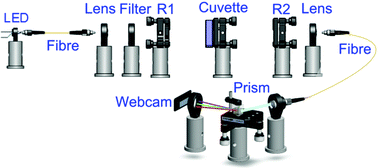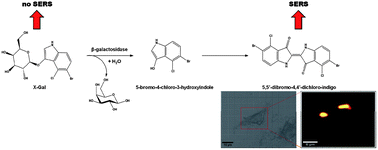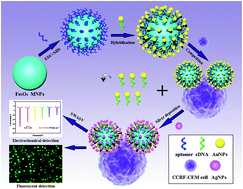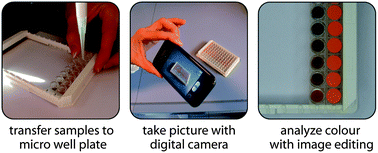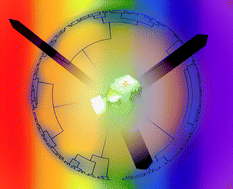Check out the latest HOT articles just published in Analyst! They are all free for you to read for the next three weeks. Enjoy!
A protein nanofiber hydrogel for sensitive immunoassays
Dae-Sung Lee, Jin-Seung Park, Eun Jung Lee, Hyun Jin Kim and Jeewon Lee
Analyst, 2013,138, 4786-4794
DOI: 10.1039/C3AN00564J
Anodic stripping voltammetric determination of cadmium using a “mercury free” indium film electrode
Sukeri Anandhakumar, Jayaraman Mathiyarasu and Kanala Lakshimi Narasimha Phani
Analyst, 2013, Advance Article
DOI: 10.1039/C3AN01070H
Alteration of Asian lacquer: in-depth insight using a physico-chemical multiscale approach
Anne-Solenn Le Hô, Chloé Duhamel, Céline Daher, Ludovic Bellot-Gurlet, Céline Paris, Martine Regert, Michel Sablier, Guilhem André, Jean-Paul Desrochese and Paul Dumasf
Analyst, 2013, Advance Article
DOI: 10.1039/C3AN00608E
Luminescence lifetime-based capillary oxygen sensor utilizing monolithically integrated organic photodiodes
Bernhard Lamprecht, Andreas Tschepp, Merima Cajlakovic, Martin Sagmeister, Volker Ribitsch and Stefan Köstler
Analyst, 2013, Accepted Manuscript
DOI: 10.1039/C3AN00208J
Dual detection of cancer biomarker CA125 using absorbance and electrochemical methods
Israa Al-Ogaidi, Zoraida P. Aguilar, Savan Suri, Honglei Gou and Nianqiang Wu
Analyst, 2013, Advance Article
DOI: 10.1039/C3AN00668A
Desorption electro-flow focusing ionization of explosives and narcotics for ambient pressure mass spectrometry
Thomas P. Forbes, Tim M. Brewer and Greg Gillen
Analyst, 2013, Advance Article
DOI: 10.1039/C3AN01164J
High-throughput analysis of drugs in biological fluids by desorption electrospray ionization mass spectrometry coupled with thin liquid membrane extraction Cecilie Rosting, Stig Pedersen-Bjergaard, Steen Honoré Hansen and Christian Janfelt
Analyst, 2013, Advance Article
DOI: 10.1039/C3AN00544E
Multifunctional carbon nanoelectrodes fabricated by focused ion beam milling
Rahul Thakar, Anna E. Weber, Celeste A. Morris and Lane A. Baker
Analyst, 2013, Advance Article
DOI: 10.1039/C3AN01216F
Facile synthesis of quantum dots/mesoporous silica/quantum dots core/shell/shell hybrid microspheres for ratiometric fluorescence detection of 5-fluorouracil in human serum
Rijun Gui, Ajun Wan and Hui Jin
Analyst, 2013, Advance Article
DOI: 10.1039/C3AN01089A
Optimization of microfluidic PET tracer synthesis with Cerenkov imaging
Alex A. Dooraghi, Pei Y. Keng, Supin Chen, Muhammad R. Javed, Chang-Jin “CJ” Kim, Arion F. Chatziioannou and R. Michael van Dam
Analyst, 2013, Advance Article
DOI: 10.1039/C3AN01113E
A label-free and colorimetric turn-on assay for coralyne based on coralyne-induced formation of peroxidase-mimicking split DNAzyme
Ting Hou, Xiuzhong Wang, Xiaojuan Liu, Shufeng Liu, Zongfeng Du and Feng Li
Analyst, 2013,138, 4728-4731
DOI: 10.1039/C3AN01024D












